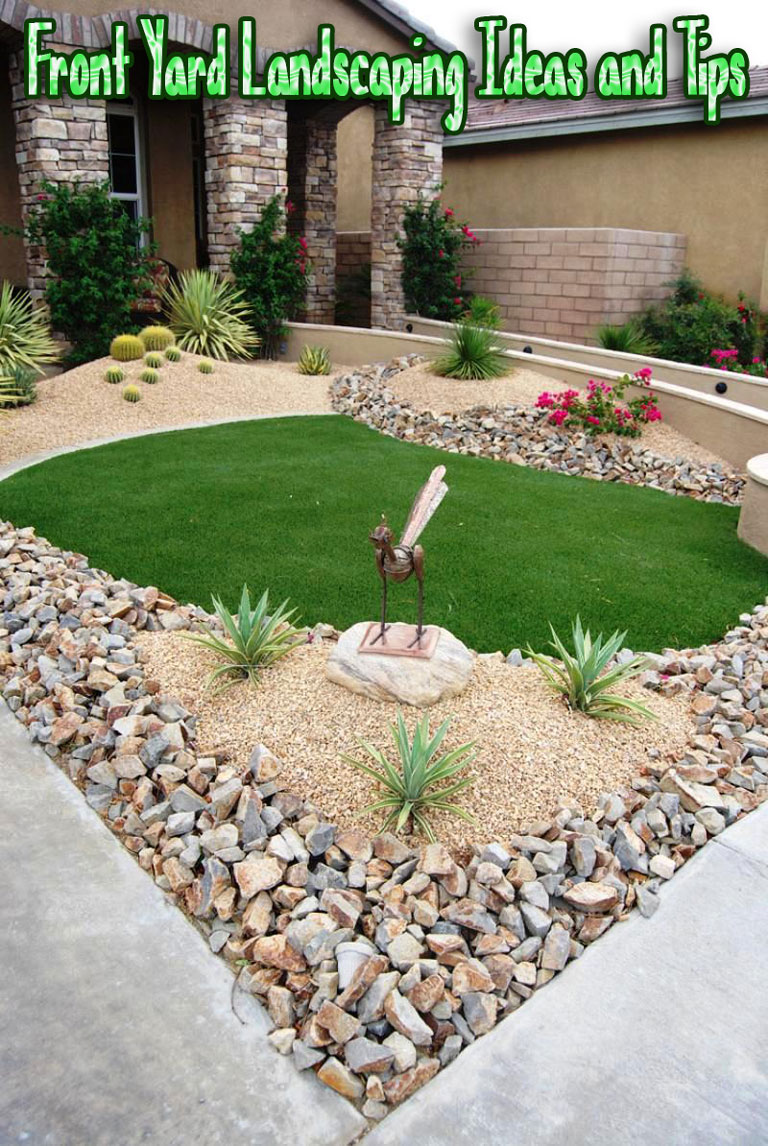
Front Yard Landscaping Ideas and Tips
Your front yard will be gorgeous once you’re through with these landscaping tips. The builder’s bit of lawn, two trees, and few foundation shrubs fall far short of the existing possibilities. Streetscaping is an excellent investment in both present enjoyment and future value.
A pleasant view from the street gives a sense of individual pride and accomplishment. And it adds greatly to your property’s value by setting the yard apart and making it beautiful.
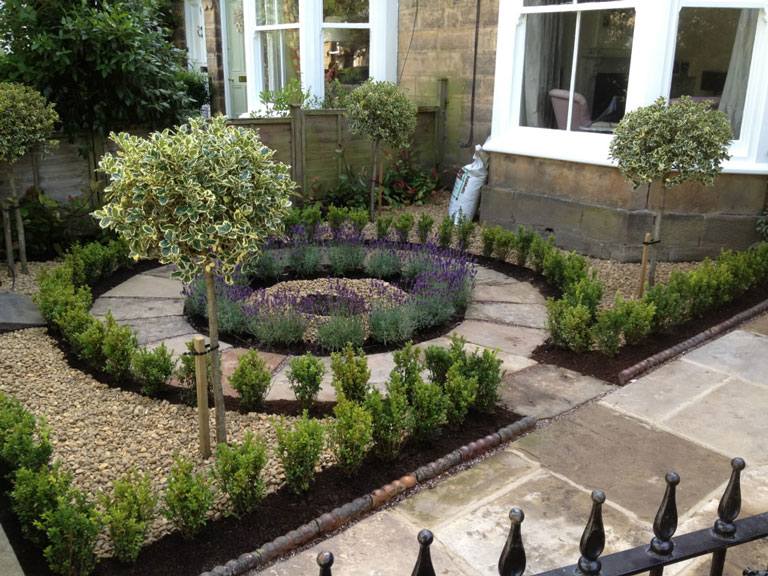
The first thing to do when planning a new front yard is to recognize your bias. The satisfaction of returning home and that you see your front yard from inside the house can skew your feelings about how your yard looks to the public.
For a more honest assessment, walk down the street, then turn back. Do the same from the other direction. Also, get in your car and approach your house slowly from each direction.
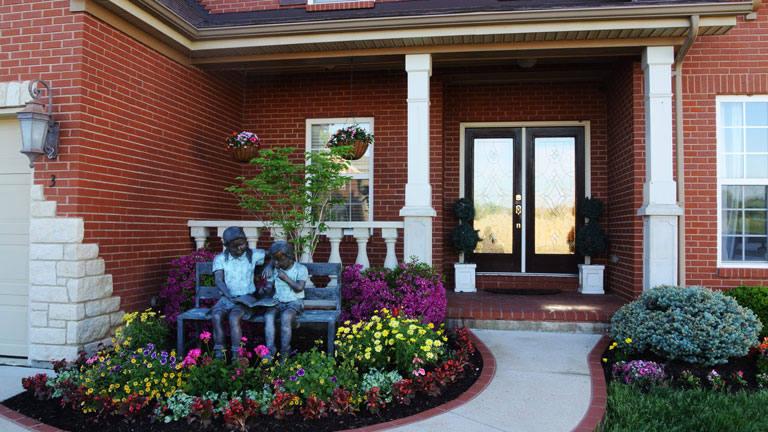
Does your house blend with those nearby? Is it appealing? Distinctive? Does it sit well on the site or look out of place? Does it need stronger horizontal or vertical lines? Does it nestle among the trees? List all its virtues and shortcomings.
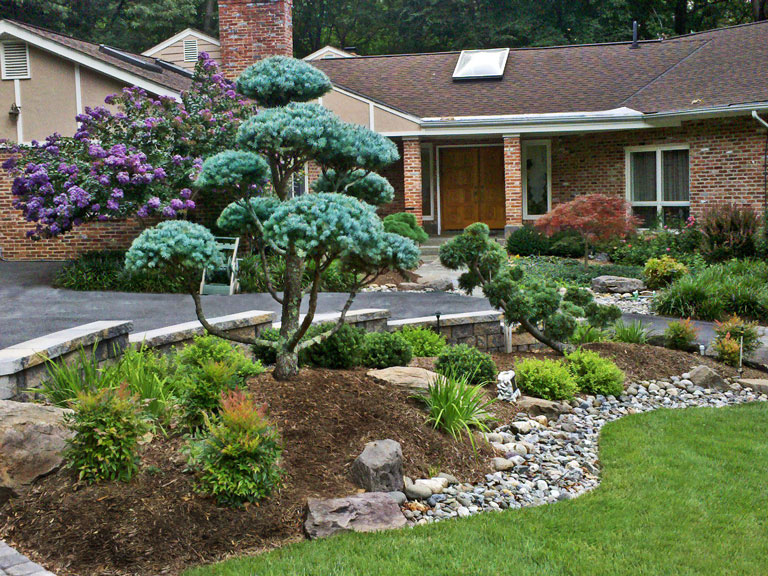
When you go to other houses, take note of the convenience of their entryways. Can you easily see where to turn into the drive? Is the drive wide enough for you to open your car door and get out without stepping on plants or grass? Can you easily tell which door to approach? Are walks and steps easily negotiated?
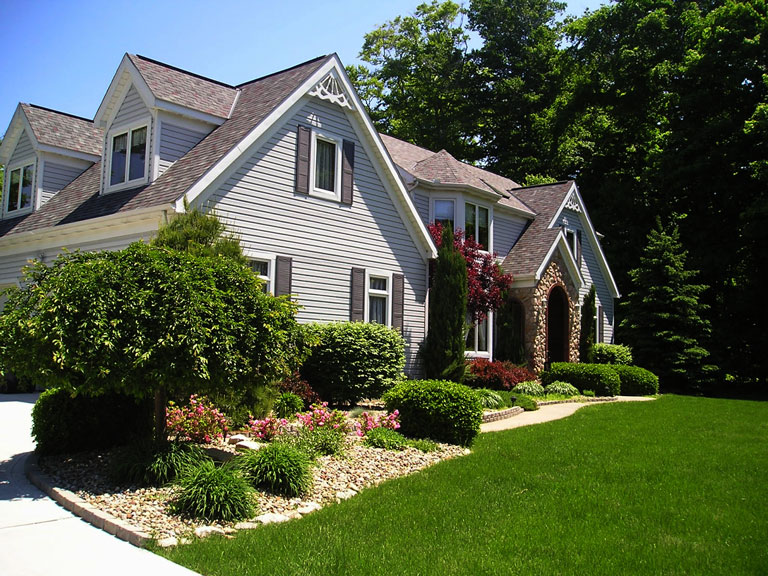
Take what you learn during these studies and carefully weigh your front yard’s planting needs — street trees, trees and shrub for framing and accent, flowers, lawn, and ground covers — and its structural needs — walks, steps, drive, stoop, edgings, and fences.
Plan a Functional Entryway
Pay particular attention when planning your front yard to making your home’s entrance clear and inviting. Use plants and structures to lead people where you can greet them most gracefully. Dramatize the front door with a lamppost, an accent shrub, a trellis to block the rain or wind, or pots of geraniums.
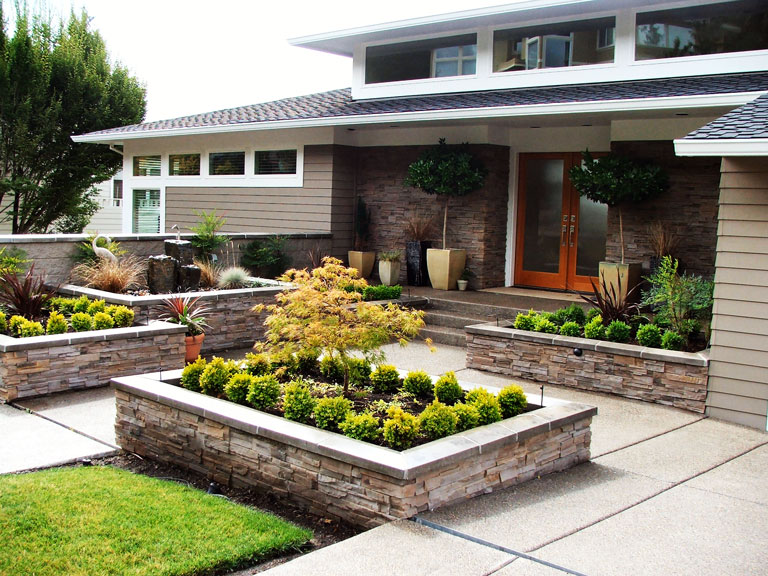
Be sure knockers and bells are evident, at a convenient height, and not hidden behind a locked screen door. The best stoops are large enough for two people to stand on with some cover from the elements and for doors to swing open. A bench here is a great help.
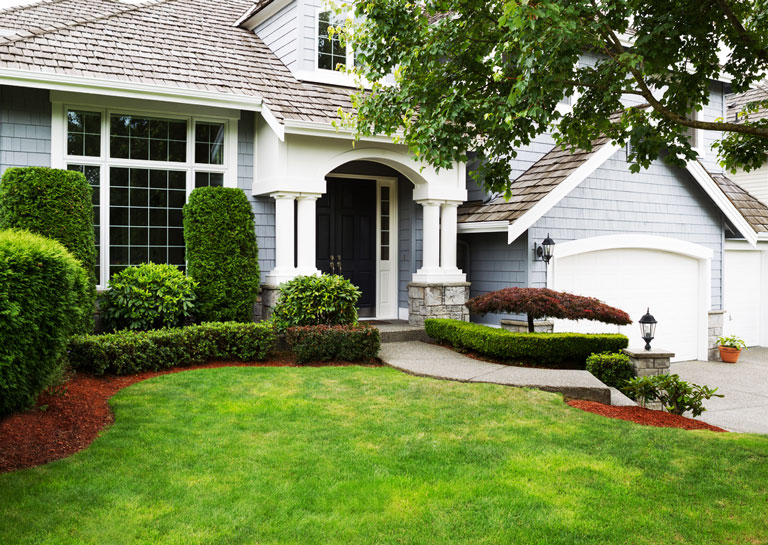
Driveways, too, should be readily visible. A simple, low planting can mark the turn. If trees or shrubs obstruct the view, remove them for safety’s sake. Where curves or slopes are involved, the placement of the driveway on one side of the yard or another can make a marked increase in visibility.
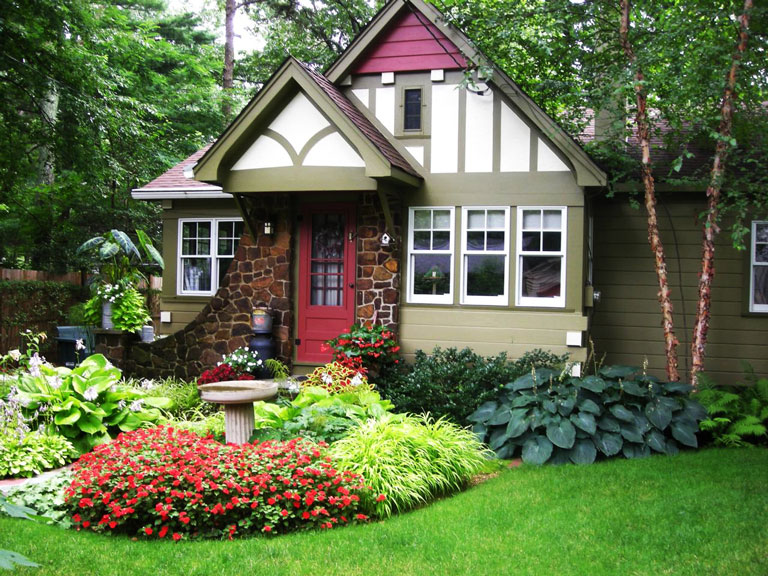
For night arrivals, lighting should mark the turn from the road to the drive, from the drive to the walk, any curves or steps, and the front door.
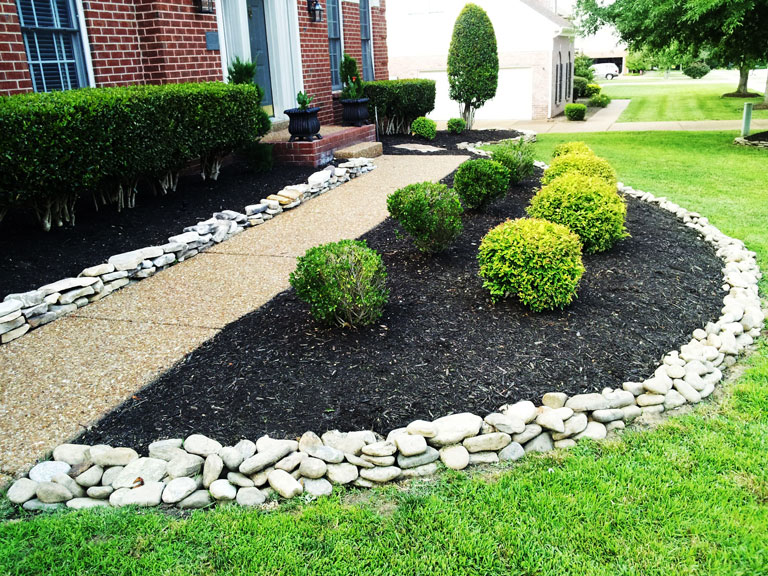
Edgings and Borders
Edgings give an important and neat outline to your yard, as well as dramatic contrasts of form, texture, and color. For permanent neatness: build in small concrete curbs; set bricks on edge, on end, or diagonally; lay landscape timbers; stand flagstones or tiles on edge; or install one of the ready-made edgings available in garden centers. Metal or rubber strips are less lovely, but they are inexpensive and serviceable.
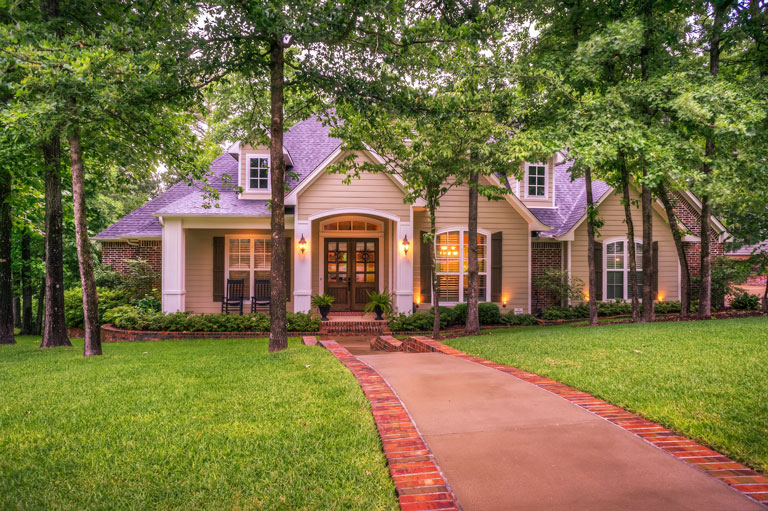
Borders of flowers, bulbs, or ground covers can be used with, or instead of, other edgings. Use the plants with the proper ultimate spread and good year-round appearance. Don’t set the plants so close to the walk that they overgrow it.
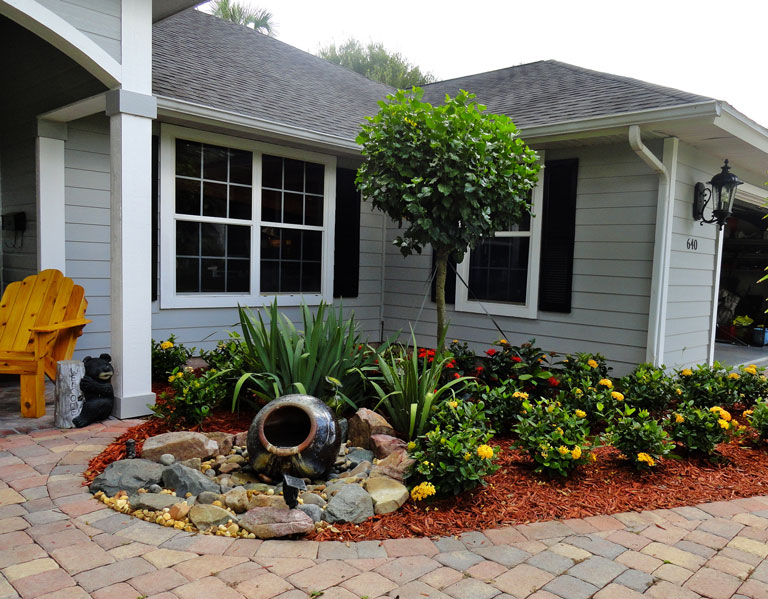
Creating an Attractive Front
Every house facade and site have visual assets and liabilities. The well-done front yard highlights the pleasing points and masks the poor ones.
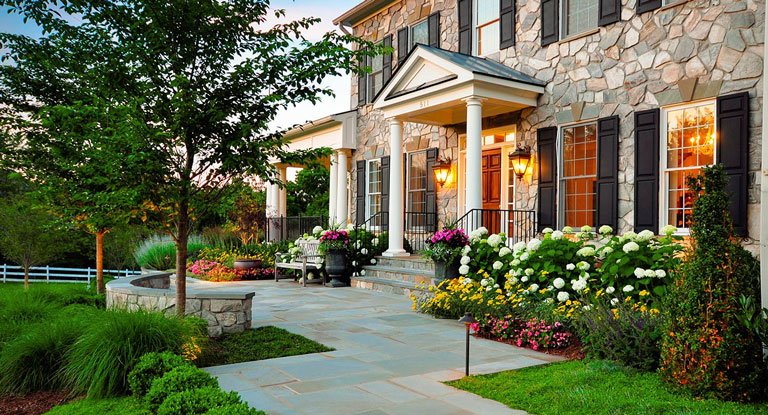
All the elements of good design come into play as you arrange your component parts for the ideal front yard. But don’t be put off by the aesthetic terms — balance, scale, unity, and the like — used by designers. All are largely a matter of common sense. If a scene pleases your eye, then it’s probably well designed.

If your house needs or will adapt to your desire for a special theme garden like colonial, cottage, Oriental, or Spanish, the look must begin in the front yard. Themes are successful only if you unify all the garden aspects carefully.

You’ll also need to determine if your preference is for, and your site demands, a formal or informal landscape. Formal settings include strong geometric lines and architectural features, clipped hedges, and uniformly shaped plants and beds. Informal designs are marked by free-flowing, natural-looking elements. Generally, informal home styles and sloping land require less rigid landscapes. Formal houses and flat land can be treated either way.
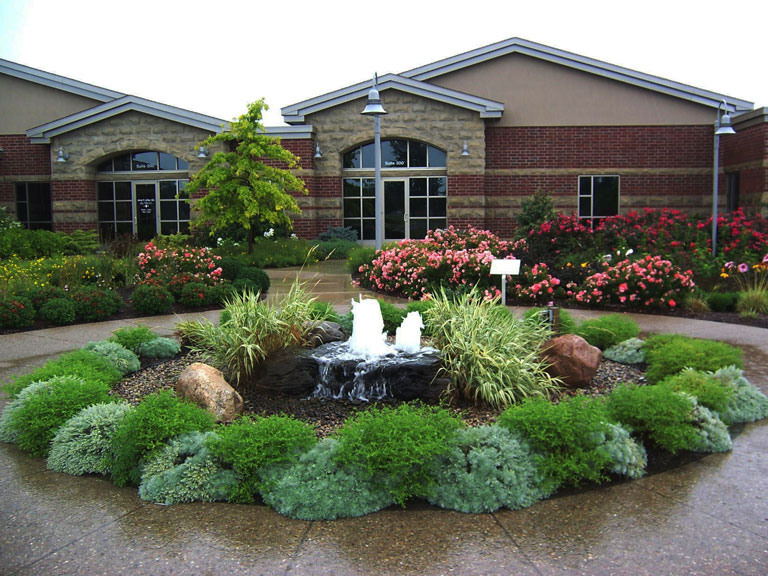
To achieve balance in a landscape, try to position elements so they give equal weight — through size, color, texture, or other aspects — to each side of a scene. How formal this weighting should be again is dictated by style of house and personal preference.
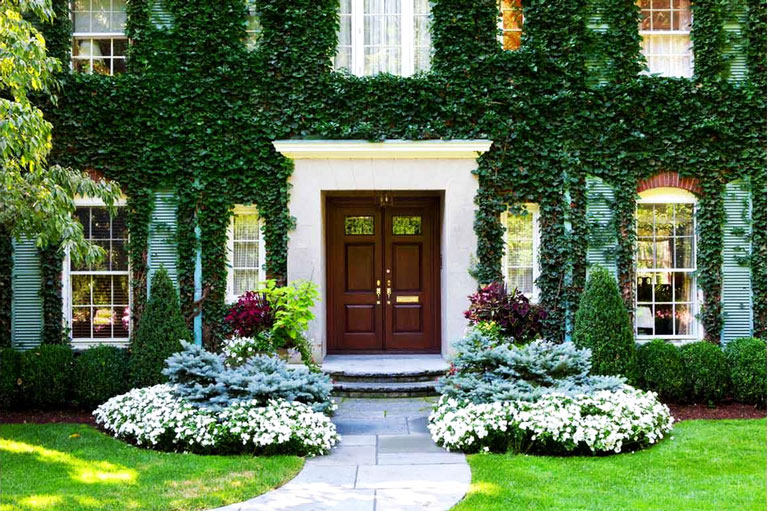
Symmetrical houses often look best when each feature and plant is duplicated on the opposite side of a front walk (as long as the walk isn’t too long or too narrow). Most houses, though, are asymmetrical, since they have only one garage or drive. In this case, balance is more subtle. Perhaps a tall tree belongs on the side opposite the driveway.
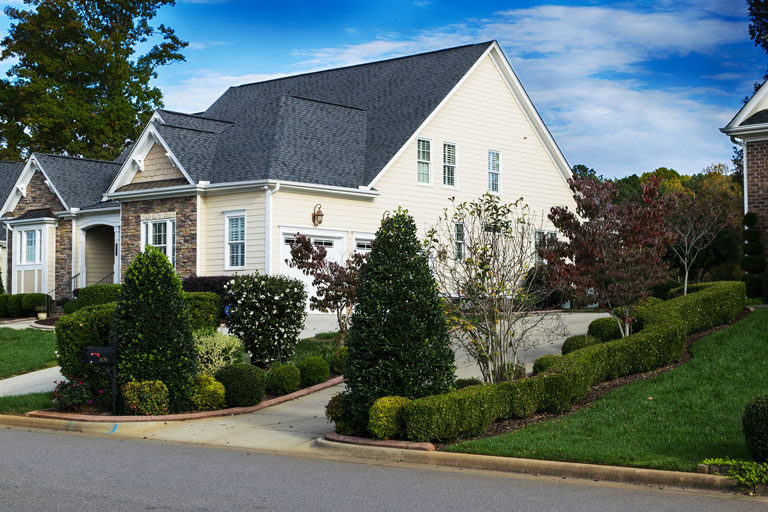
Achieving pleasant scale — or, keeping elements in proportion to each other — is also subtle, since plants must grow before you can be sure. Choose plants that will complement your home’s size at maturity, as well as some plants that will grow fast enough to quickly make a mark. Don’t let anything dwarf your house.
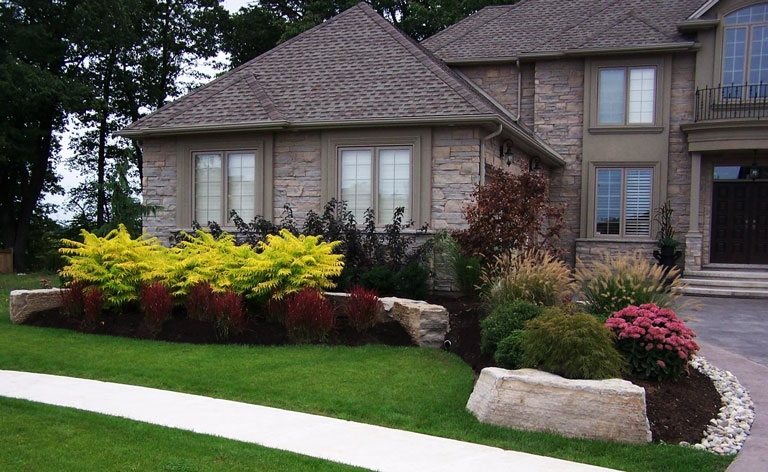
The design principles of unity and simplicity often go together. Several plants of the same color and kind have more effect and give greater pleasure in a landscape than one each of several types. Use only enough variety for sustaining bloom and adding visual interest.

If you want more types of plants, say for continual harvests of many kinds of fruit, try combining plants with similar or at least compatible shapes, textures, and foliage or bloom colors.

The old rule that the front yard is for the public and the backyard is for fun and family is sometimes better broken. Is your front yard the sunniest in a cool climate? The coolest in summer? On the south side where tender plants and fruit can best survive the cold?
The largest part of your yard? Then reclaim some or all of it for private family use. A wall, fence, or sometimes only a small screen can give you the privacy you need.

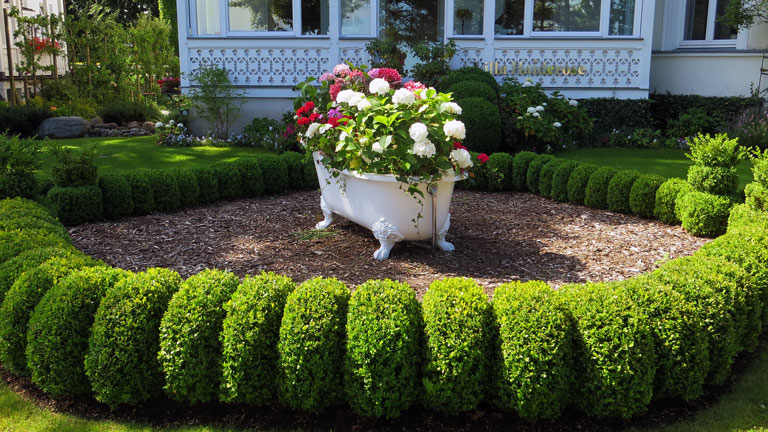
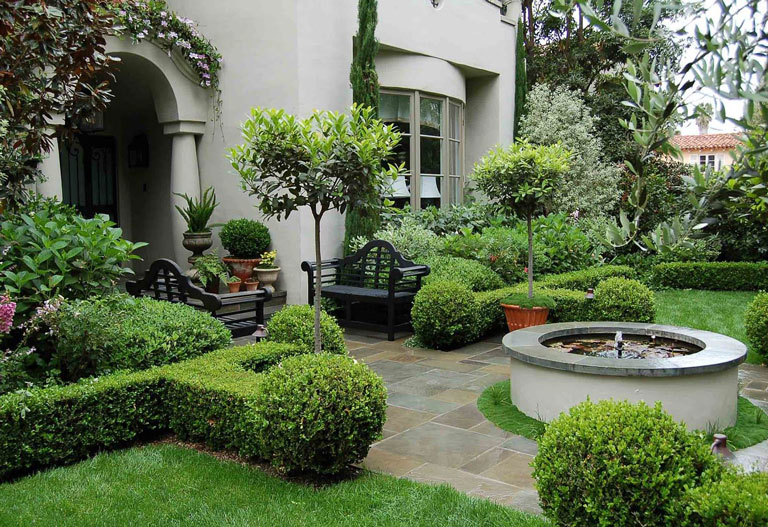
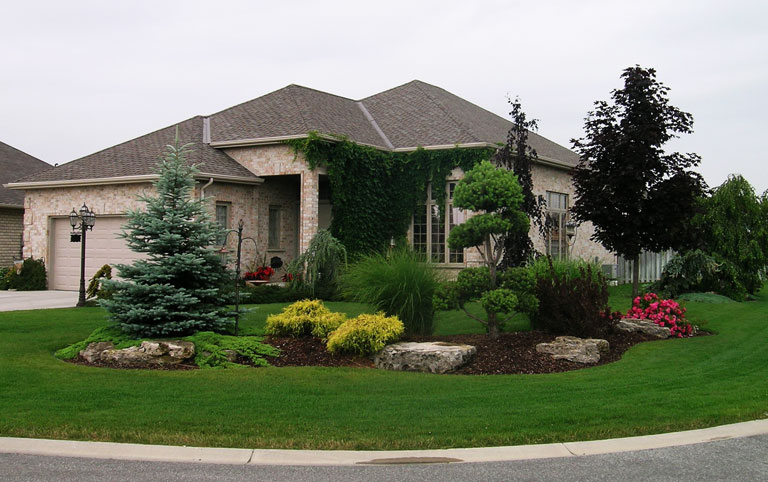
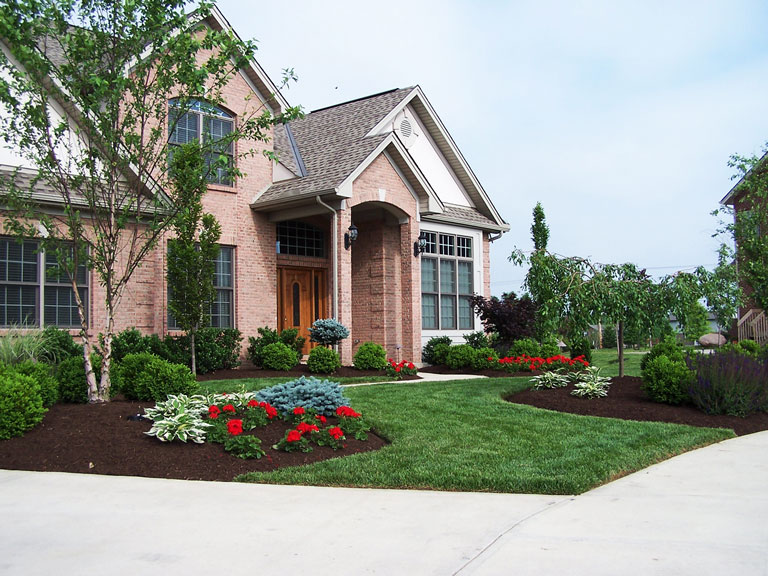
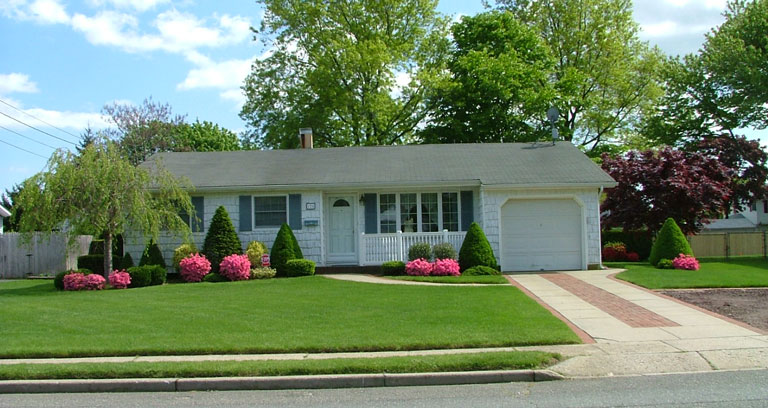
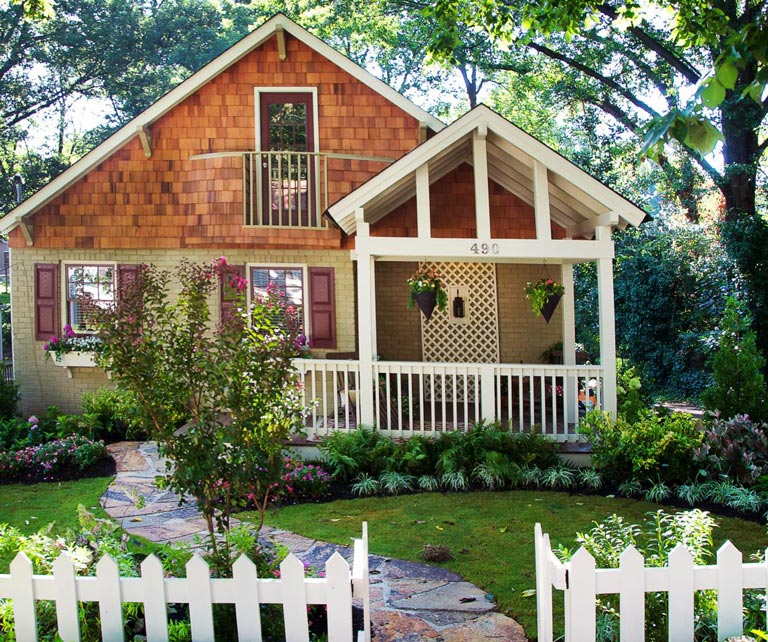

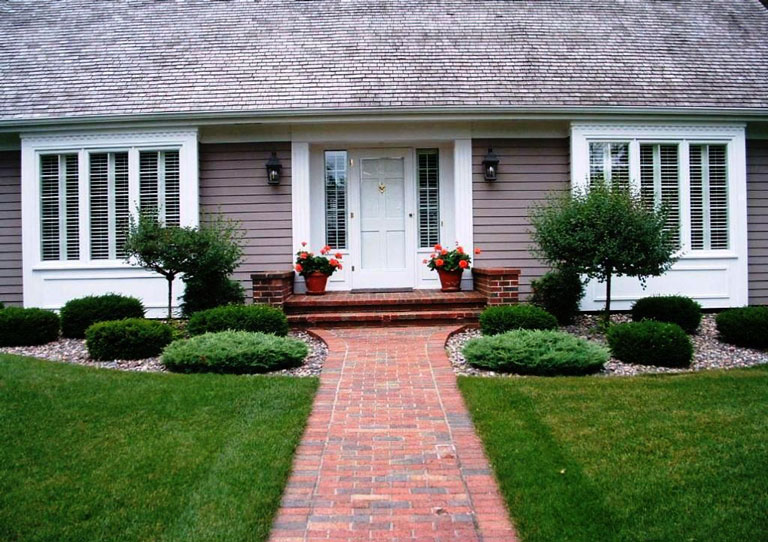
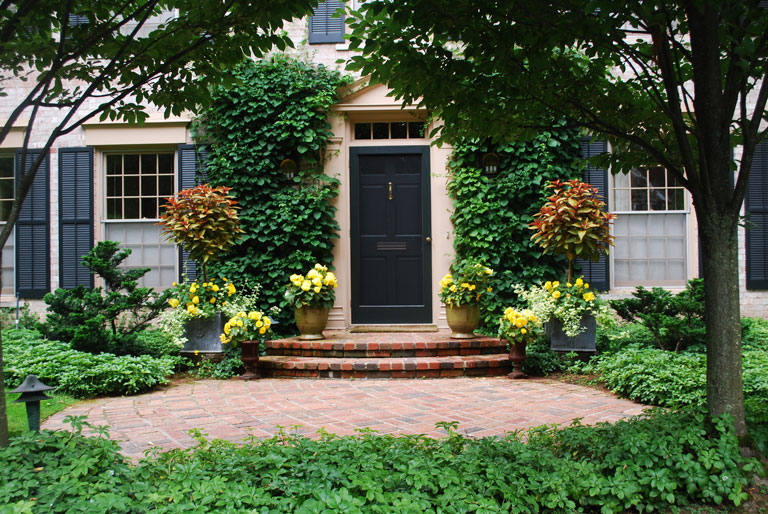
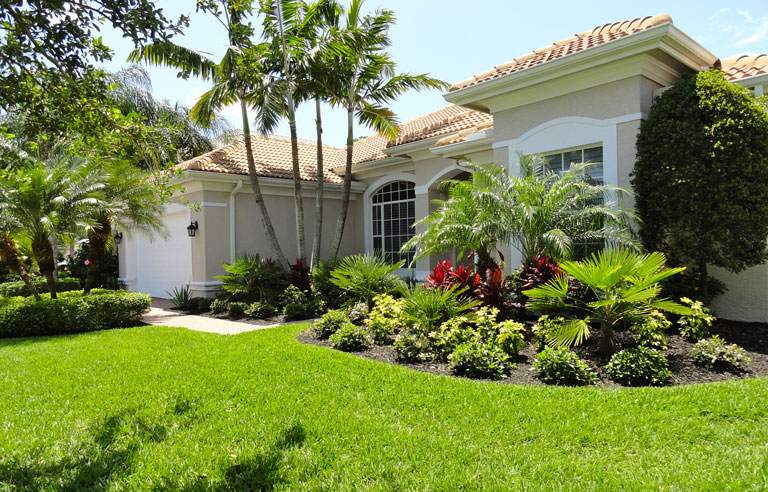
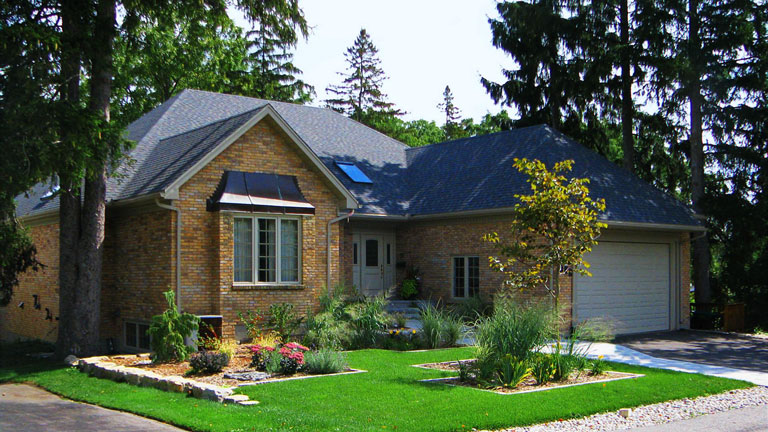
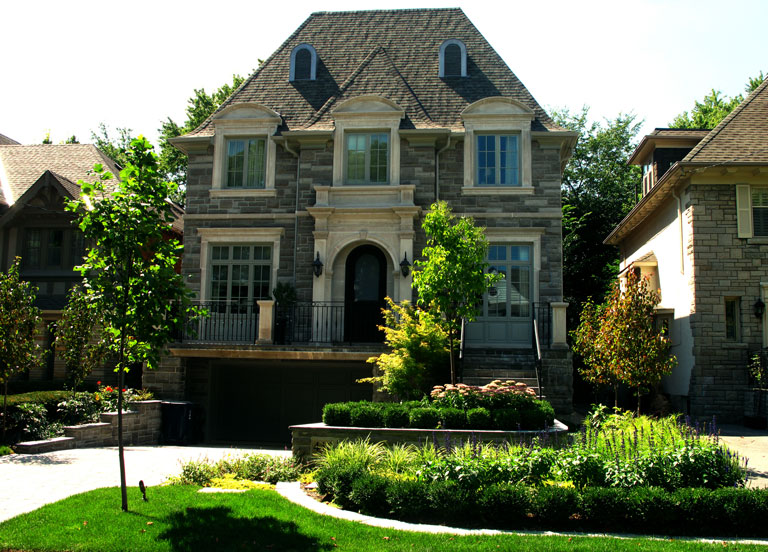
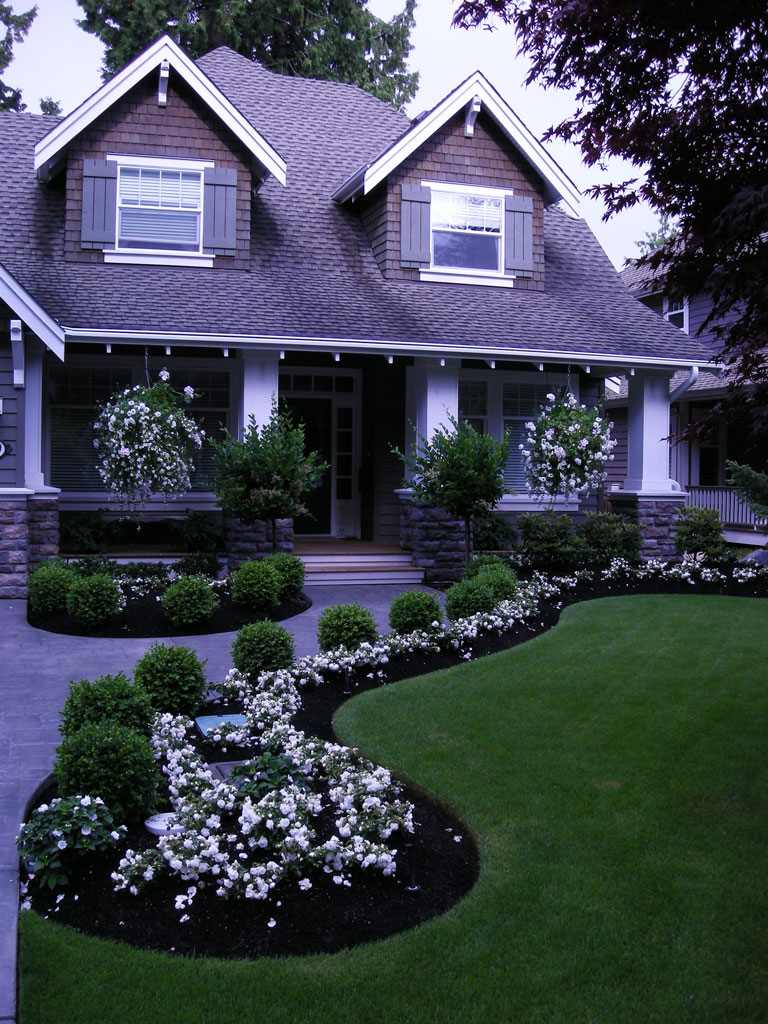
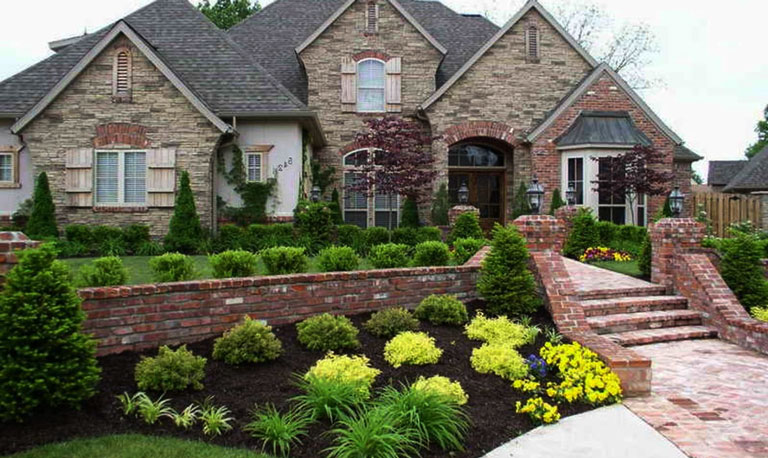
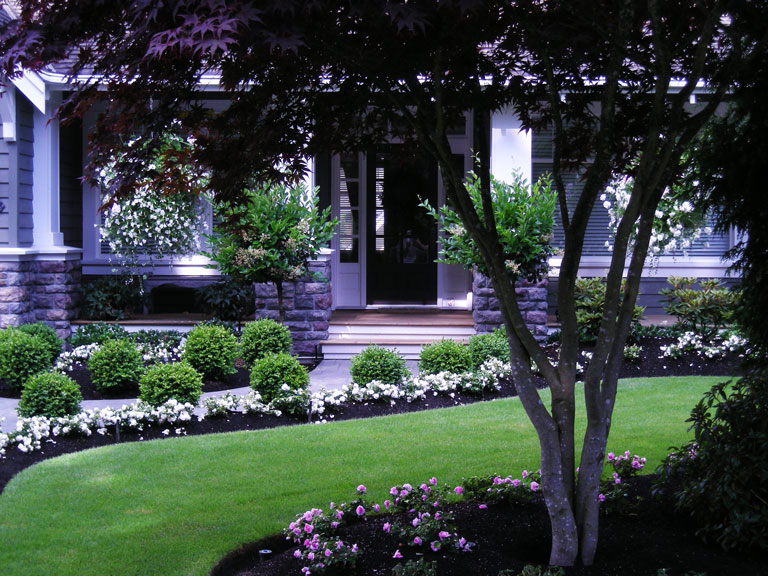
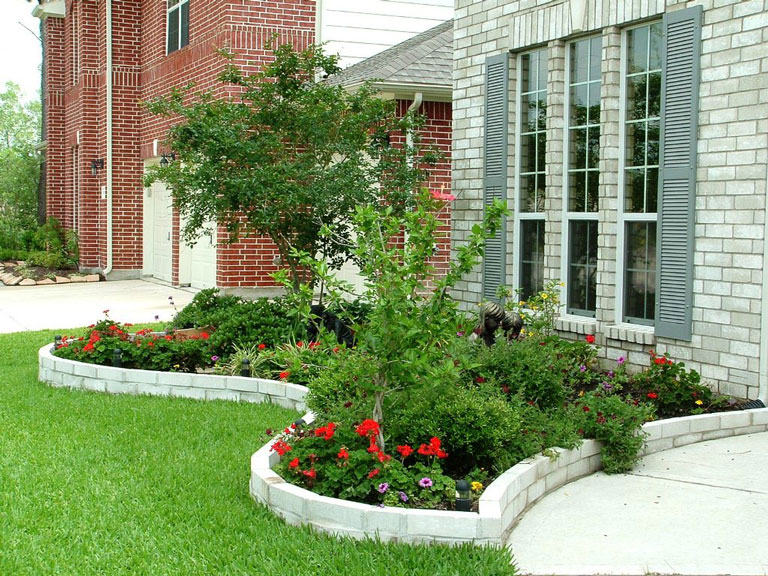
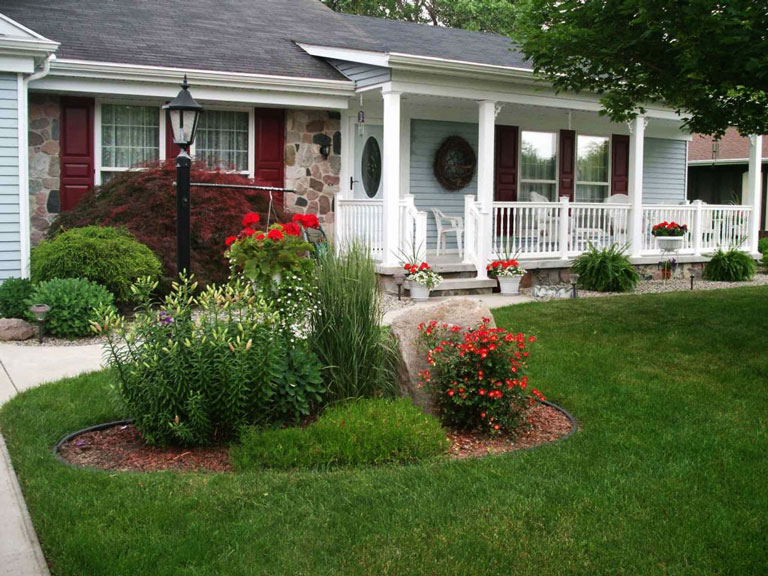
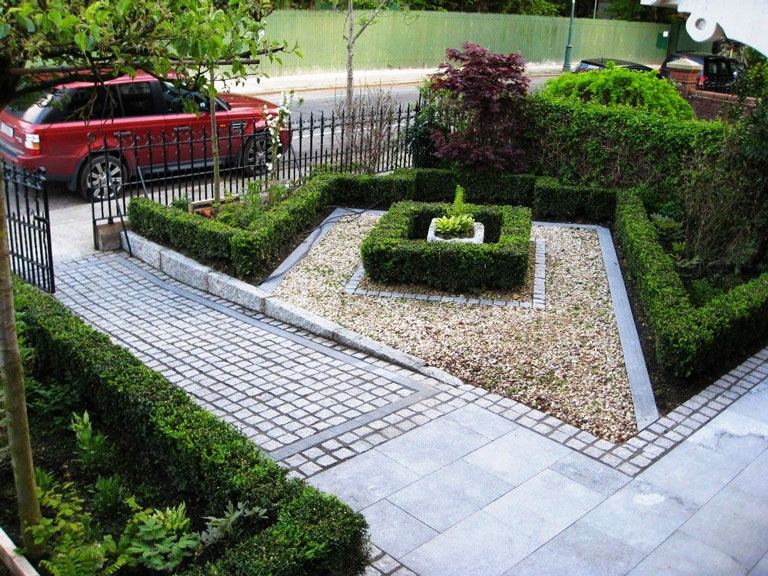
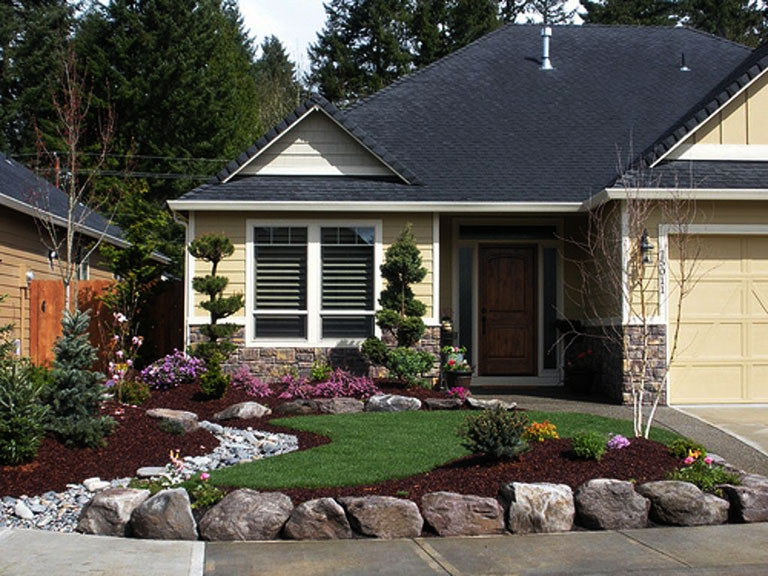
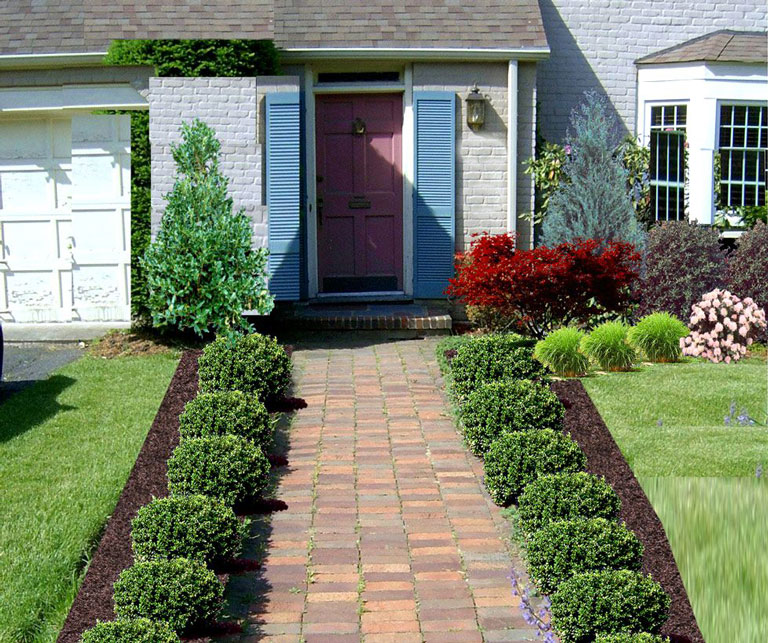
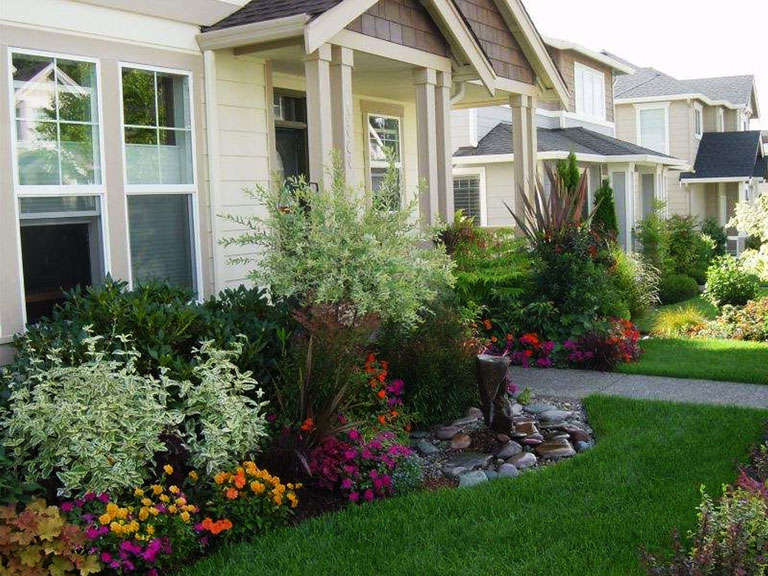
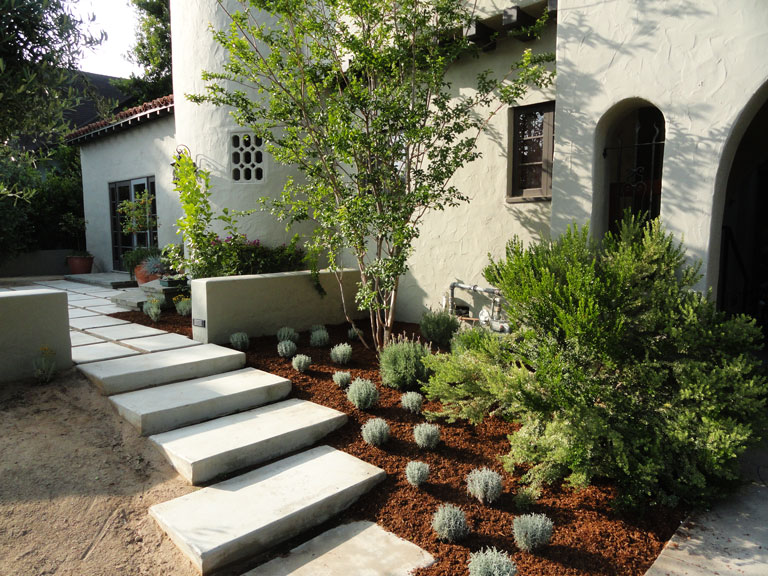

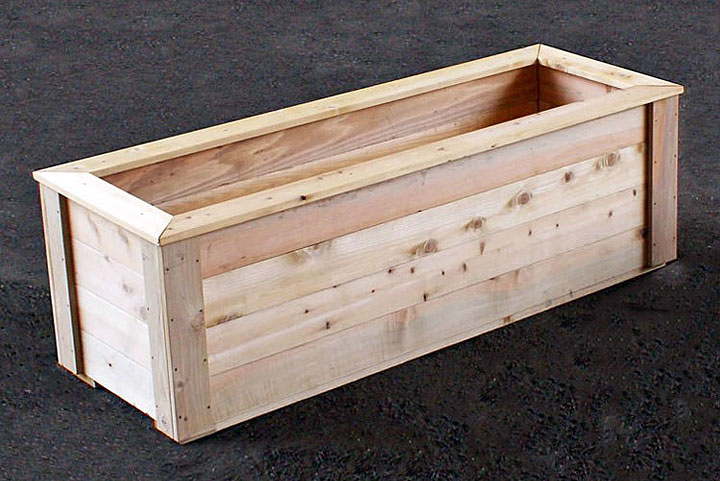

I like your idea of laying landscape timbers or bricks on edge, end, or diagonally to create an edge or border. When choosing what materials to use, you’d probably want to consider the other items used in your design so that they’ll work well together to create a beautiful overall design for your yard. Once you’ve figured out if you want bricks, timbers, or another material, it would probably be a good idea to look online to figure out which supplier will be able to give you the amount, type, and size you need to get the job done so that you can properly lay them out for the edge, border, or any other landscape features.